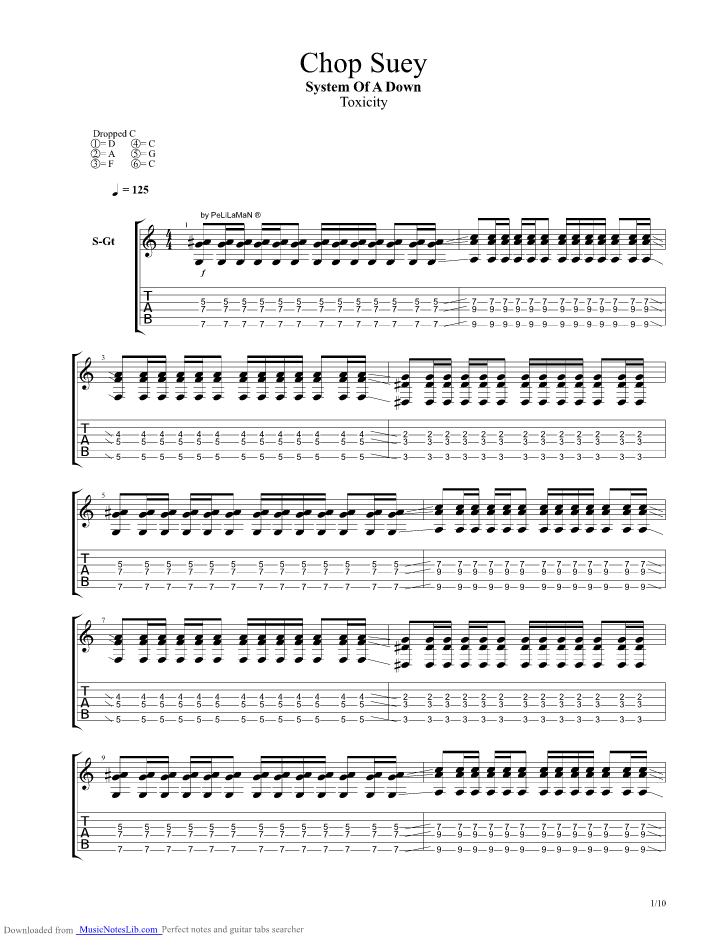

C minor is a very common scale you will see used in many songs in Drop C tuning. Some scales will be used more often in Drop C tuning to take advantage of the low open C string. You may find that a lot of Drop C songs use this scale. This is useful to remember if you have already memorized the fretboard in Standard or Drop D tuning because it means everything you’ve already memorized is now two frets higher than normal.Īnother reason you might want to memorize the above note positions is that the C Major scale is commonly used in Drop C tuning. You may also notice if you look across the second fret notes that those notes match what you tune your guitar to for Drop D tuning. I highlighted the C positions as you will likely want to focus on those notes when writing riffs. Here are the notes of the fretboard in Drop C Tuning: If you have already memorized the notes in the fretboard in Standard Tuning, then you can either shift everything two frets in your mind or re-memorize the fretboard in this new tuning. It takes a bit of time to get used to scales in Drop C tuning because all six strings have shifted in pitch. Metal guitarists (and guitarists in typically heavy styles of music) commonly use Drop C tuning simply because of how different power chords feel to play. Power chords are played as normal on all other strings, but when they start on the sixth string, you only need one finger to play them.Īs you will see in the Guitar TAB for songs later on, this lets you jump around the fretboard and play fast-moving power chords.
CHOP SUEY TABS HOW TO
If you know how to play power chords in Drop D tuning, this will feel exactly the same. Here is how you play power chords in Drop C Tuning: You’re able to play power chords using one finger across the lower two or three strings. Power chords in Drop C are fun to play in the same way that they are fun to play in Drop D tuning. Here are some new chords to learn for Drop C tuning:Ī lot of songs in Drop C focus on chords based on C, so it’s worth the effort to memorize these chords. If a chord uses the sixth string, it will be different in Drop C tuning. It might take a while to get used to the new names, but the advantage is that you probably already know these chord shapes. You can use the same chord shape, but the chord now becomes A# (or Bb) Major in Drop C Tuning. The first chord you might recognize as the C Major shape. Here are some examples of chord shapes you know from Standard Tuning and what they are called in Drop C tuning:

With any chord shape you know from Drop D tuning, simply lower the chord name by a whole step. For example, the E Major chord shape becomes D Major in Drop C tuning. The only thing that changes is the name of each chord. The great thing about Drop C tuning is that all the chord shapes you know from Drop D tuning stay the same. If you haven’t heard of ‘whole step’ before, read my lesson on intervals to understand what this means. In other words, Drop C tuning is a whole step (two frets worth of pitch) down from Drop D tuning. In Drop C, you start with D Standard Tuning and drop the low D string down to C. In Drop D, you start with Standard Tuning and drop the low E string down to D. The easy way to remember Drop C tuning is to think of it in the same way you think about Drop D tuning. Here is a diagram showing what each string is tuned to in Drop C tuning:

You will end up with your guitar strings tuned to C G C F A D. Now to change to Drop C, you lower the low D string down to C. You tune the low E down to D, the A string down to G, D down to C, G down to F, B down to A, then high E down to D. To tune your guitar in Drop C, start by tuning all six strings down a whole step or two frets in pitch. Tuning your guitar in Drop C requires you to change the tuning of all six strings. 4.5 Related Guides and Lessons: How to Tune Your Guitar in Drop C


 0 kommentar(er)
0 kommentar(er)
